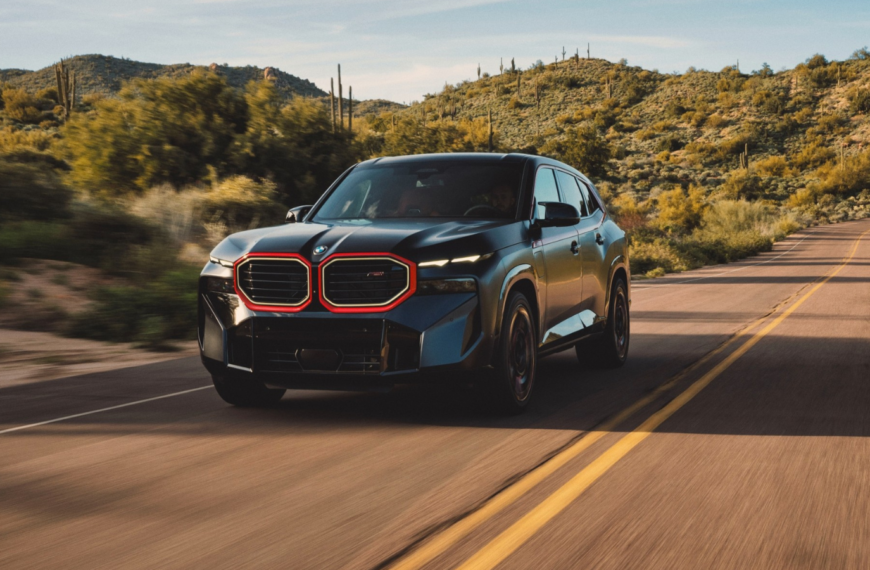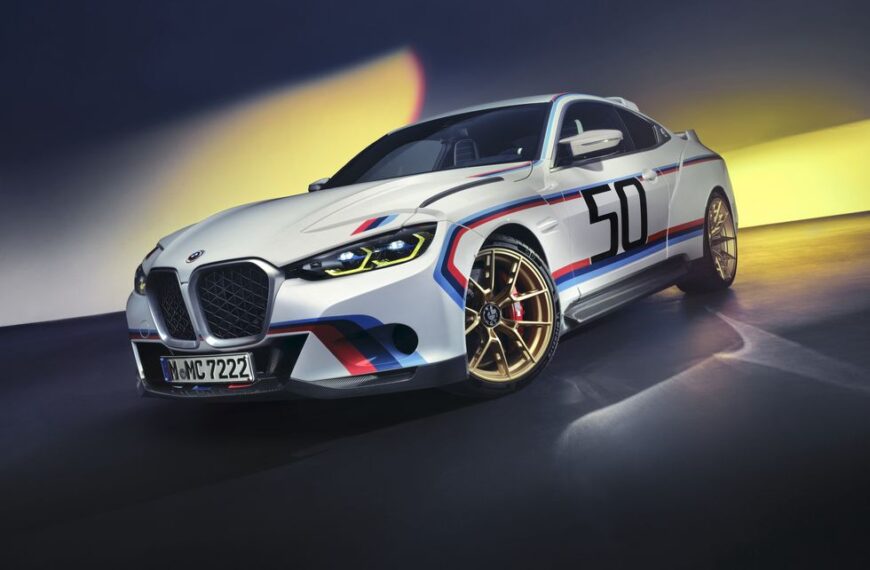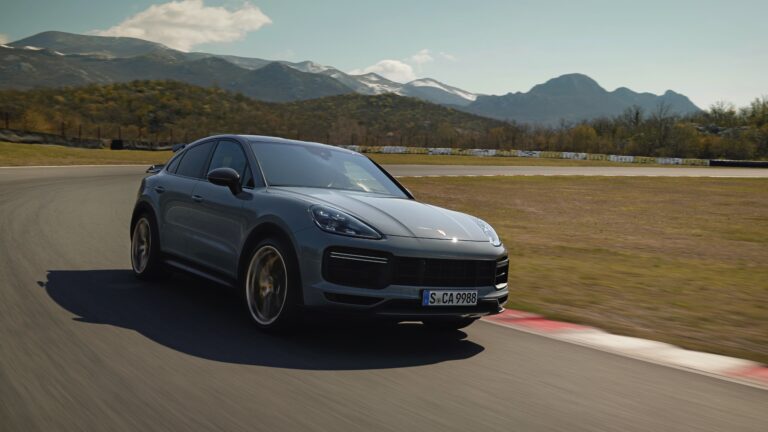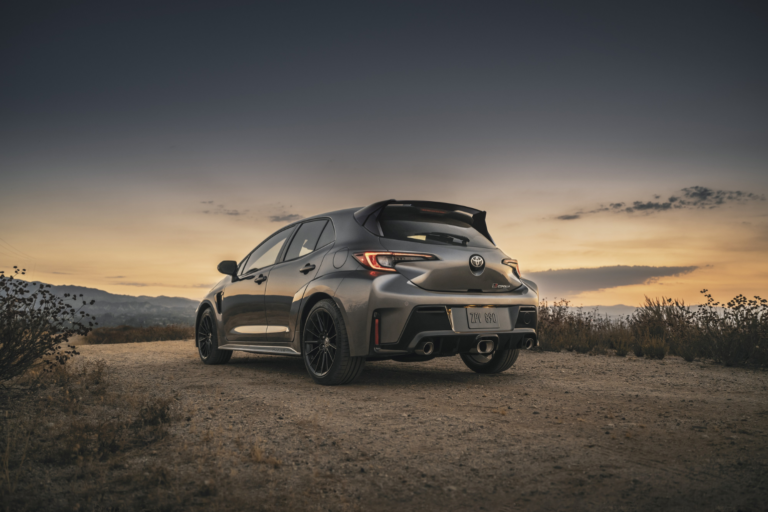We shoved both onto public roadways and pitted them against another. Two of our favorite body designs in the Alfa and the M3 combine together to make one hell of a super sedan experience

A tale as old as time European powers facing off, however this time it’s the Axis Powers pitted against each other. Germany and Italy both have their pinnacle of high performance sedans seated well over $75,000 effectively pushing their respective units into super sedan territory. The Alfa Romeo Giulia Quadrifoglio is a newcomer, entering the US market in 2015. On the other end BMW has solidified its mark on the States by having the M3 on American shores for over 30 years. Each powered by its own twin turbo six cylinder both follow the European benchmark of having a high revving six banger with the added boost. We took both out on the streets and let them face off against each other in traditional European fashion.
Both cars have a sense of flair to them. When you look at either you feel intimidated. Even before you even take out the key you tend to get a sense of power over you. It’s clear to see however which type of flair each represents. The Alfa Romeo clearly symbolizes class with its elegant lines that flow easily. With an exotic sounding name like ‘Giulia’ the Roman spirit gushes from the QF. It’s refined and classy, like an Alfa should be. Yet its 505 horsepower don’t exactly emit the most luxurious vibes out there. Similar to the M3, the Alfa’s engine spells trouble, in a more mechanical sense. That 2.9 L V6 falls just .1 L short of the M3’s 3.0 L size yet comes in the V pattern in a sharp contrast to BMW’s heralded inline 6 that’s been around for probably longer than you’ve been alive.
Taking both out onto the street gathered more attention than one would expect. Our M3 outfitted with the Brooklyn Grey color scheme, a $550 option, got oohs and aahs from the North DFW crowd, looking menacing. The M3 approaches the task in a more… different way than the Giulia. The M3 is rowdy and boisterous. A born troublemaker from the get go, a sharp contrast from its Italian foe. Jagged lines compare well against the QF’s sleekness as well as blatant attempts at downforce with the lip spoiler and front splitter. The M3 hasn’t come to shake your hand, it’ll let you know it’s arrived. Loud and proud is the M3’s game and it knows it.
Put both on the street and our editors were blown away. Full blown amazement. Both cars had us taking a gasp of air— and albeit gas at a Chevron. When both pulled in, all we got was attention from nearby onlookers as the two enthralled just about everyone. As we filled up and watched the analog numbers on the gas pump gauge rise, we came to an interesting revelation… these things drink gas like it’s water. Along with every other cost associated with owning an European sports car, you might want to get a bigger wallet or take out some loans simply for gas because both of these vehicles are not kind to the environment. Both cars have the rigidity and handling you’d expect from an exotic sedan, little to no steering wheel play, and chassis structure that could hold a wine glass on the roof without it breaking on turns. Given that Dallas doesn’t have the fun geography of other regions, we made do on our fair share of twisty roads. Both of these cars needed to be driven to truly experience what they are, no less. You can make your assumptions about what these cars are but they’d simply be wrong. Nearly every facet of our thoughts were changed after driving both of these monsters.
2nd Place: Alfa Romeo Giulia Quadrifoglio
Shoddy reliability and questionable interior lux serves as the Achilles’ Heel of an otherwise exquisite beauty
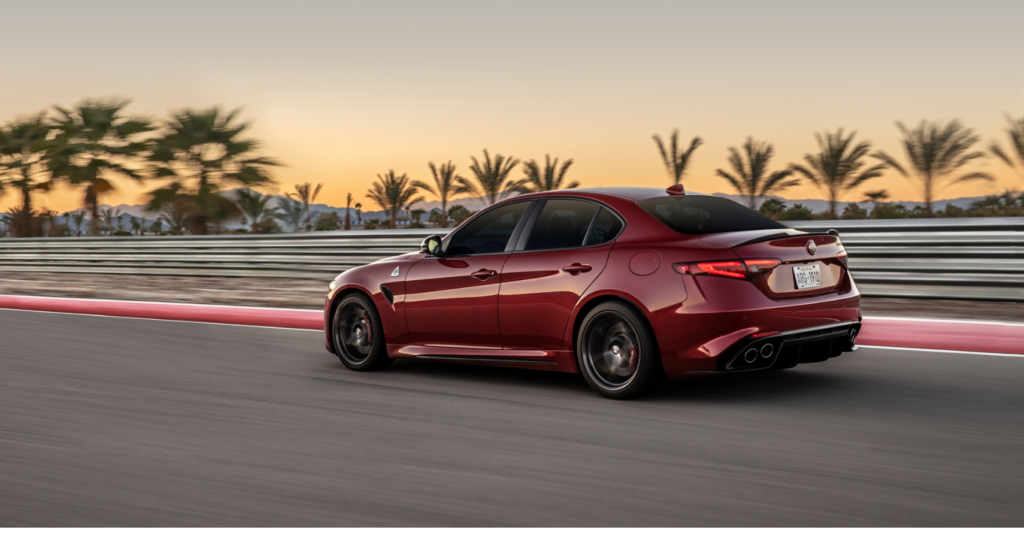
We’ve already covered the Giulia in a previous review and we loved it. Things don’t change here. For a race built, bred and tried car from a proven auto manufacturer is something we should all love. The Giulia amazes in quite possibly every way possible. The QF with its 2.9 L twin turbo V6 puts out just enough power to excite in the best way possible.
Running the 60 sprint in 3.8 seconds is fast (it’s SUV brother, the Stelvio is .2 seconds faster), giving off slight muscle car vibes. Its flowing lines hide the monster inside, that Ferrari-derived, Ferrari tuned, and Ferrari tested twin turbo V6. Playing to the facade underneath the beauty, the melodic engine shoves out a gorgeous timbre that would put the M3 to shame. Bred from supercar roots the Giulia sure acts and drives like one. Ferrari co-developed the engine so it retains its Italian flair. Make no mistake however, this is not your typical Italian sports car, it leans a little bit too much for our comfort. Despite being held in by a carbon fiber backed sport bucket seat, the body roll on the QF was little bit too much for our comfort. ‘Tis a shame too, the seats, a multi-thousand dollar option, were comfortable and looked beautiful but were unable to live up to their physique due to the QF’s excessive body roll especially on tight corners.
We did give it this however, we gave it the distinction of being the smoothest ride of the duo. Utilizing a hodgepodge of magnetic ride and performance springs allow the Giulia in its comfort mode to feel fast yet maintain a silky smooth ride through the bumps we felt on the road. The ditches and potholes were exemplified in the M3 yet were nulled in the QF. The QF felt more luxury more than performance but that’s not to say there was a huge lack in race track esque-ness. Yes I made up a word, I lost my thesaurus to find synonyms. The twin turbos do take a little bit of time to spool up (we’ll come back to this), when that boost hits, it’s an absolute riot. Thrown back in your seat riot. That needle flies up the tach and the speedo seems like it’s possessed. I’ve never seen such a boost difference in a vehicle before. It hits like a freight train, and with all the power being sent to the rear wheels sitting upon sticky Pirelli tires, it hooks and sends you flying. Imagine a shot of nitrous just waiting and pouncing upon the engine to give you a shock of true flight.
However somewhere in our excitement lies a problem. The turbos aren’t sequentially charged. Meaning instead of one firing off one after the other, they boost at the same time. Which is fun and all, but it makes it more muscle car instead of being a drivers’ car. The twins hit at around 3,000 RPM, a tad too high for our liking. If we were to truly own one of these, we’d install an anti-lag system if this thing were to ever hit the racetrack. The turbo lag is too excessive putting a sharp thorn in the side of what otherwise is a pure driving experience. We’d give credit to the lack of excessive nannies, or thereof the ability to nix them. You don’t have to go digging knee-deep into some infotainment screen just to turn off traction control or ESC, and when you do, the party turns into a rager. With all the power being sent to the rear wheels exclusively (AWD isn’t even an option), the back end slips out seamlessly mated with the limited slip differential also jointly developed with Ferrari. Roots continue to run deep.
Playing to the muscle car aspect, the QF runs the 1/4 mile in 11.7 seconds (as we tested), and we almost got kicked out for not having a roll cage as we crossed the jumbotrons at 122 MPH. “It either has to be stock or have a roll cage, slow it down a tad”, spoke the official at our local drag strip. We didn’t have the heart to tell him this is bone stock so I just let off the throttle a bit and set myself up in the 12’s. A part of me died that day. While we all wish the European spec options fizzled their way across the pond, they didn’t. Therefore we’re stuck with the 8-speed dual clutch, and all 12-year old opinions aside, we don’t mind it. Yes, we do want a manual, but with Alfa just now making a reappearance in the US market, we don’t blame them for holding their horses on that one. The DCT shifts just right and quickly, putting regular automatic transmissions to absolute shame. The aluminum paddle shifters felt just right in our handles and at some points it felt like it was so fast that it shifted even before we pressed the button.
The goliath brakes on the QF left something to be desired however. With how big they are you’d expect more out of it but they don’t fit the personality of the Giulia. You’d expect them to be fitted to a Chevy Cruze, not the top of the line Alfa Romeo. They struggle in traffic, a lack of cooling makes brake fade and overheating an issue on the track, and they’re not grabby at all. I wouldn’t blame the calipers, which are engineered by Brembo, it’s the discs themselves, and it would personally be one of my first modifications if I were to own one.
Now for the elephant in the room. Even Rome falls. The reliability of the Giulia and the Alfa Romeo brand in general is a bit suspect. We got multiple phantom check engine lights that went away in a couple of minutes, interior creaks and groans (for $80,000+?), and a bunch of service lights. In fact, “service [insert random vehicle component]” is implanted in my brain forever. Even Car and Driver had a ton of issues in their long term test. This is truly what drug this car down beneath the M3, in this segment everything counts and if half the time a vehicle is plagued by some sort of handicap, it’s not worth buying or even driving. Parts and repairs are always going to be expensive and for a high-end sports car whose MSRP is over $80,000 is a no-fly in my book.
The interior is luxurious but shoddy when you look up close at it. Leather and suede are present, but so is the the blatant use of plastic. Interior creaks shred eardrums and quite frankly get a bit annoying. While the interior put up a facade of being exquisite, it doesn’t look like what it should, and that’s why it falls just short of amazing. It’s a gorgeous monster with a deep dark secret.
1st Place: BMW M3 CS
A cult classic turned rockstar, the M3 earns itself a high-performance makeover being an all-around warrior
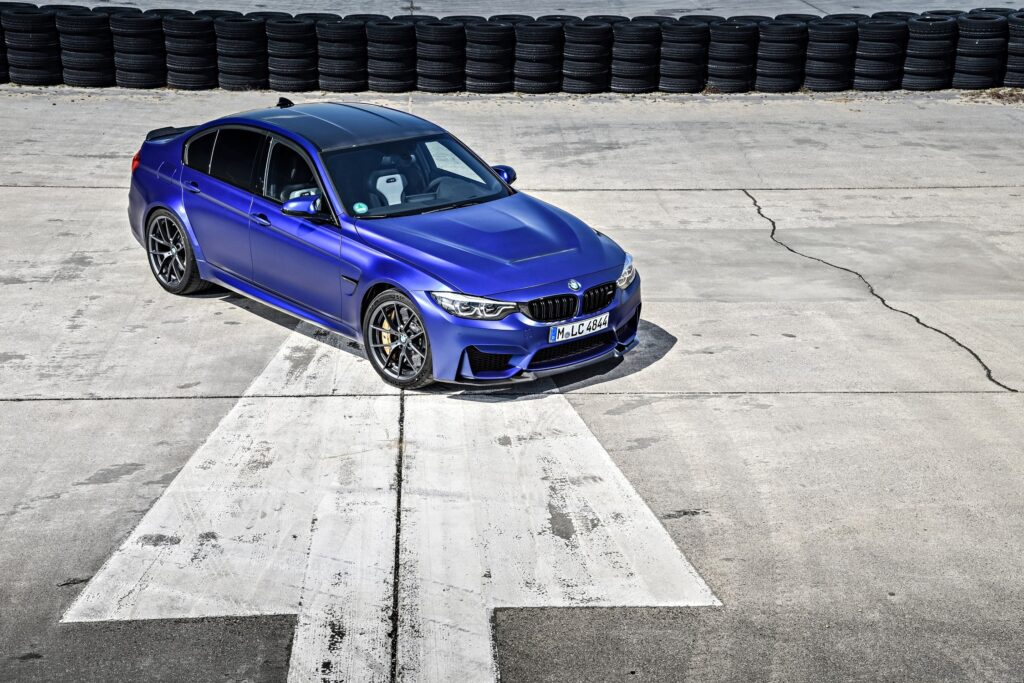
Heralded as the modern day godfather of german high performance sedans, the M3 is a classic type of brute strength. For one its iconic inline-6 engine makes a reappearance here. BMW has reused the same steering system it has used for the past two generations, and will only use a slightly updated version for the new M3. Tried and tested, BMW understands what works and what doesn’t making it a better choice than the Alfa. And we witnessed this firsthand. From the get-go everything seemed well more thought out and more ergonomic. The M3 showed up to play in our test and is truly one of the best drivers’ car you can buy.
Despite being a BMW, the evidence that this thing is a turbocharged inline-6 is quite hidden. Throttle response is quite instantaneous and paired with 425 horsepower, it’s plenty fast. 0-60 in 4.0 seconds, hair lower than the Alfa, yet it feels faster. Maybe because you’re more planted to the ground with its lower drive height, or the stiffer springs make it a little less of a luxury car and more of a raw beast. Whatever it is, we love it, our team all came to the consensus that the M3 was faster— at least felt faster than the QF. Our competition package raised the price nearly $3,000 and it was all worth it. New brakes, an electronic suspension system, an active rear differential, even better than a LSD with an toggable “Drift Mode”, and plenty of other goodies meant for MidAmerica.
Throw the M3 on any sort of curve and you will see exactly how sticky and planted this vehicle truly is. Little to no body roll, the M3’s seats actually are active and will bolster you in even without the Competition Package. The interior is aeons above the Alfa’s, and we can chalk that up to R&D costs as well as Alfa’s relative new entrance into the US market. Little to no plastic, and where you would expect plastic lays carbon fiber as well as ergonomic and logistically reasonable placement of buttons and switches. Another addition in contrast to the Alfa Romeo’s DNA modes are BMW’s M modes. They simply are more customizable and configurable, a rapidly growing trend in this segment, and in the car market in general. Leather and suede thoughtfully scatter across the cabin, and the rear can comfortably seat 3 more. In case you wanted to take your entire family to Texas Motor Speedway.
In sharp contrast to the Alfa, the M3 isn’t meant for the drag strip. We didn’t get chastised when we ran it at 12.4 at just under 120 MPH in the infield of TxMS, but we did feel the power delivery was a whole lot smoother. Again taking a different path than the QF, the power is linear with different size turbos patterned for a straight line on the dyno chart. In fact, a blind test on our testers made it feel like it wasn’t turboed at all, which is perfect on tracks. We felt an antilag mod wouldn’t have been needed, as at basically any RPM a portion of either turbo would stay spooled. While that was smooth, our ride was not.
The lowered suspension tuned by M engineers was a bit harsh and unforgiving. While it wasn’t nearly as bad as the M4 GTS, it certainly did get redundant and hurtful at times. Adjusting the drive mode to comfort didn’t exactly do much as my back still is cursing the M3 and my chiropractor is currently hating my guts. On the highway at higher speeds, it does certainly get a lot better, but small Texas backroads are not going to be your best friend.
Looks kill, and the M3 could do that if you step on the wrong side… the M3’s jagged lines look like a racecar, and have one of the lowest drag coefficients of any production car. Downforce is also the M3’s middle name with our car feeling planted to the asphalt at nearly all time. Have you ever wrestled with an alligator? Well that’s what the steering feels like, it’s so planted the steering wheel itself was reluctant to turn, but in our opinion, that’s much better in a performance sense than it being too light. Braking with its massive carbon brakes similar to the Alfa felt grabby at just the right points and our very scientific ‘throw water on the brakes test’ proved that the M3’s brakes were much cooler after the same amount of time driving. Little to no brake fade was experienced.
The M3 in our opinion blew the track portion straight out of the water, and its road test put the Alfa in its place as well. We’re still excited what more cool stuff Alfa will release, including its new EV in the works. For now, the king still retains his throne. The M3 also has plenty of aftermarket support in relation to the Alfa, a big component of track use. The M3 has one motto and one motto only— In speed we trust.


